This Lo Mai Gai post may contain affiliate links. Please read my disclaimer.
Pig’s Trotter in Vinegar, also called 猪脚醋 or ‘ter ka cho’ (Hokkien) among the Chinese community, or pork knuckles in black sweet vinegar, is a common postpartum dish for postnatal mums during the ‘confinement period’, that is the one month after they have given birth. It is believed that it will help new mums to warm the womb and purge the “wind” in her body, without doing which, will leave bad side effects in the body during her old age. The collagen from the fatty and gelatinous trotters cooked with vinegar (vinegar helps break down calcium in animal bones) will also help to replenish calcium and collagen lost during her pregnancy, thus other than the trotters, protein-rich eggs are also added to the dish to help build back muscles. (Also check out my Red Glutinous Rice Wine Chicken)
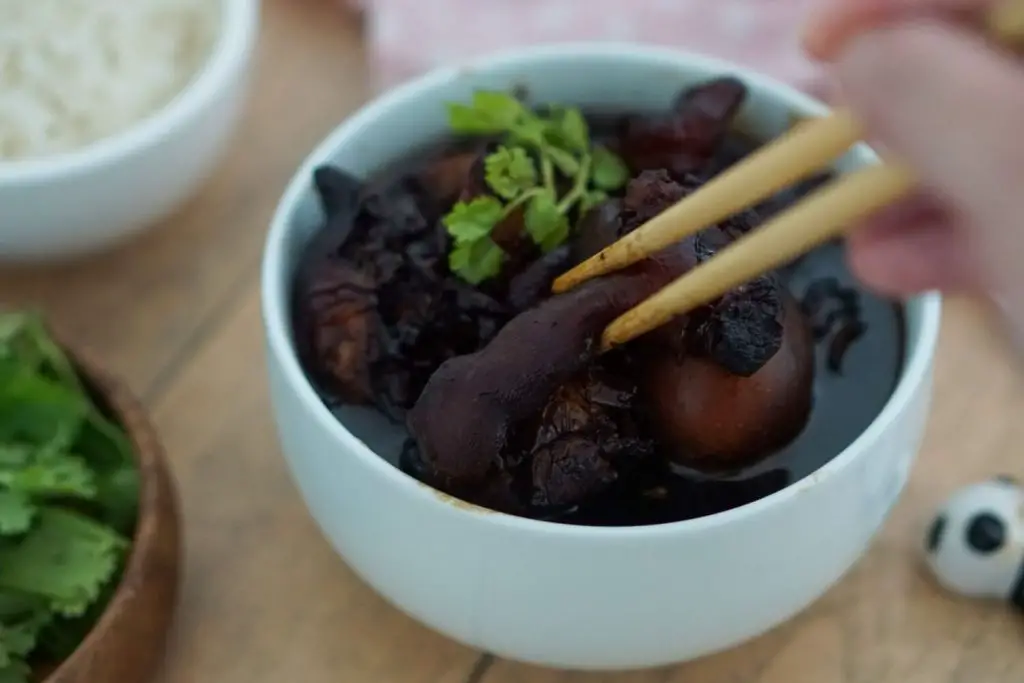
The perfect pig’s trotters in vinegar will have very tender and succulent pork trotter meat that can be easily torn apart, and jelly-like chewy skin that almost melts in the mouth. The ginger vinegar stew, even though is so sour in the beginning that it irritates the eyes and the nose when you go near it, turns perfect after it’s cooked until rich and ‘sweet’. In fact, every time we make this dish, we will always ‘recycle’ the sauce and make a second round with a fresh supply of pig’s trotter and eggs.
Pig’s trotter in vinegar is not just for new mothers though, the ladies in my family (including my teenager niece) love eating it and would sometimes cook it even though we are not going through confinement. Some of my guy friends also love eating it once in a while, so it’s not just a ladies food, although not many men out there I know are fond of sourish food.
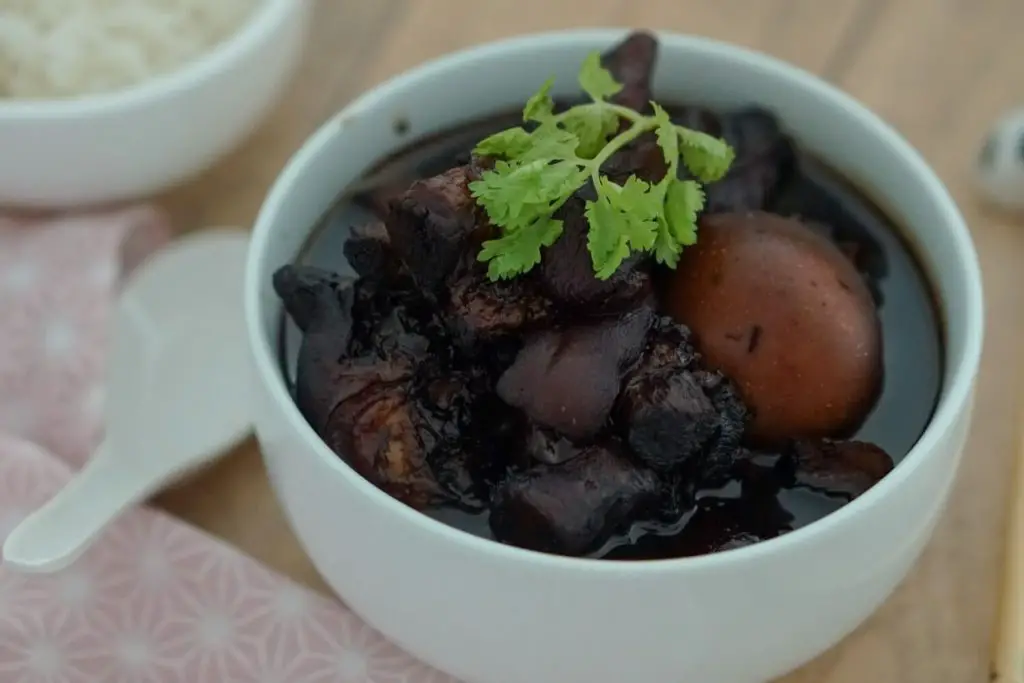
Every ingredient used in the pig’s trotter vinegar is added to the dish for a reason, mainly for health benefits. Old ginger is typically used if a confinement lady is to consume this, as this type of ginger is considered very ‘heaty’ thus it’s good for warming the body. My friends living in countries with four seasons love to eat it during the winter season, for obvious reasons—because this dish helps keep them warm. However bear in mind that this dish can be quite detrimental if you are on a diet, mainly because of the fats content.
In Singapore, I have so far only found one Chinese Dim Sum restaurant offering a pig’s trotter in vinegar dish. It’s quite pricey with only 2 small pieces of the meat and a lot of ginger. So it’s for good economical reason that we cook it ourselves and get to enjoy a lot more.
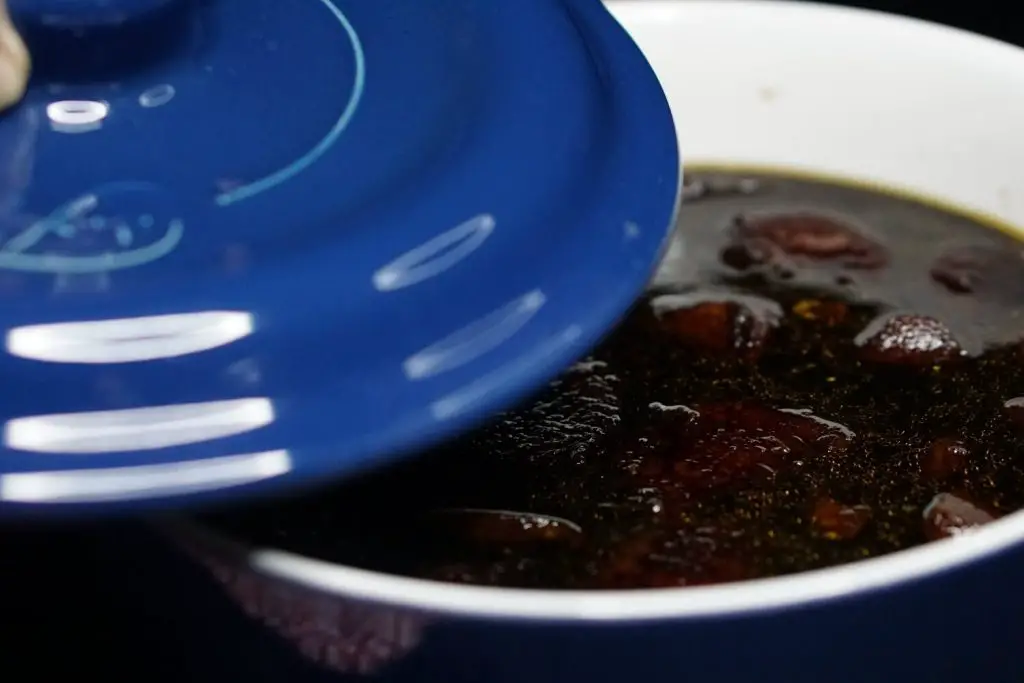
A few things from my mummy to remind myself next time I cook this dish again:
- In this recipe, heavily guided by my mummy, we cooked the ginger and vinegar a day before, leaving it on the countertop overnight for the ginger to fully absorb the goodness and aroma of the vinegar. This is optional and it’s perfectly fine to cook the ginger and vinegar and the pork trotters on the same day.
- We used a combination of young and old ginger, older ginger being spicier than the young ginger, but the younger ginger being easy on the chew. If you are cooking for confinement purpose, you will want to use more of the old ginger. We first fry the ginger in the pot without oil so it dries up as much as possible. Dried ginger will absorb the vinegar better.
- Many recipes ask for the Bentong ginger, a special type of ginger named as the ‘King of Ginger’ from Malaysia, Bentong, a sleepy town in the Western part of Pahang. It’s known to be ‘spicier’ than the other types of ginger. This ginger was certified GI (Geographical Indications) by the Agriculture Bureau of Pahang, equivalent to the EU (European Union) quality schemes of GI. We couldn’t get hold of Bentong ginger, thus using a normal old ginger in this recipe.
- We used the front leg portion of the pig’s trotter, in Mandarin, it’s called the pig’s hand (猪手). Hind leg has lesser meat and is much shorter than the front leg. You can also use a combination of both front and hind legs. The pig’s trotter has to be thoroughly cleaned and blanched to remove the strong pork smell. We asked the butcher to help remove the hair but if you look closer while washing and after blanching, there might still be some hair that needs to be removed with a kitchen tweezer. We first start to exfoliate the skin using coarse salt, clean the meat and skin under running tap water, especially between the folds, to remove any scum. Pork trotter is then boiled to remove the blood and other impurities from the muscles and bones. You will notice while boiling that the scum will float up and water turns cloudy. After boiling, we wash the trotter again under running tap water to remove any remaining scum, before adding to the ginger vinegar stew.
- As the vinegar is extremely acidic, to the extent it irritates my eyes and nose, it’s better to use ceramic, glass, claypot or stainless steel to cook this dish, basically a pot that’s non-reactive. Do not use cast iron, aluminum, or copper cookware.
- The pig’s trotter in vinegar is best consumed after at least 4 hours. We usually eat it with rice the next day. The longer the pork trotter soaks in the vinegar, the softer it will become. However the eggs will turn hard like metal eggs. It’s best to add the eggs the day of consumption.
- With the portion of this recipe, we will have some leftover ginger and vinegar. We will then use it to cook a second round of pork trotters, by then, the ginger vinegar will turn less spicy and more ‘sweet’ and rich and we add more water to the stew so the liquid is enough to cover the meat. The ginger will also become softer.
- There are a few types of black sweet rice vinegar in the market. This is not commonly found in western countries unfortunately so if your Asian grocery stores carry them, you might want to grab a few bottles on standby. In Singapore, we have a few choices but my mummy highly recommend using the ‘Dog brand’, which is the Chang Kong Thye Black Sweet Rice Vinegar (陈公泰/狗仔嘜正糯米甜黑醋). It comes in two types of coloured label, the yellow label seems to be more commonly available and is the usual one that most homecooks will use while the pink label says it’s double the potency. Black Sweet Rice Vinegar is a dark coloured seasoning made with glutinous rice or sweet rice.
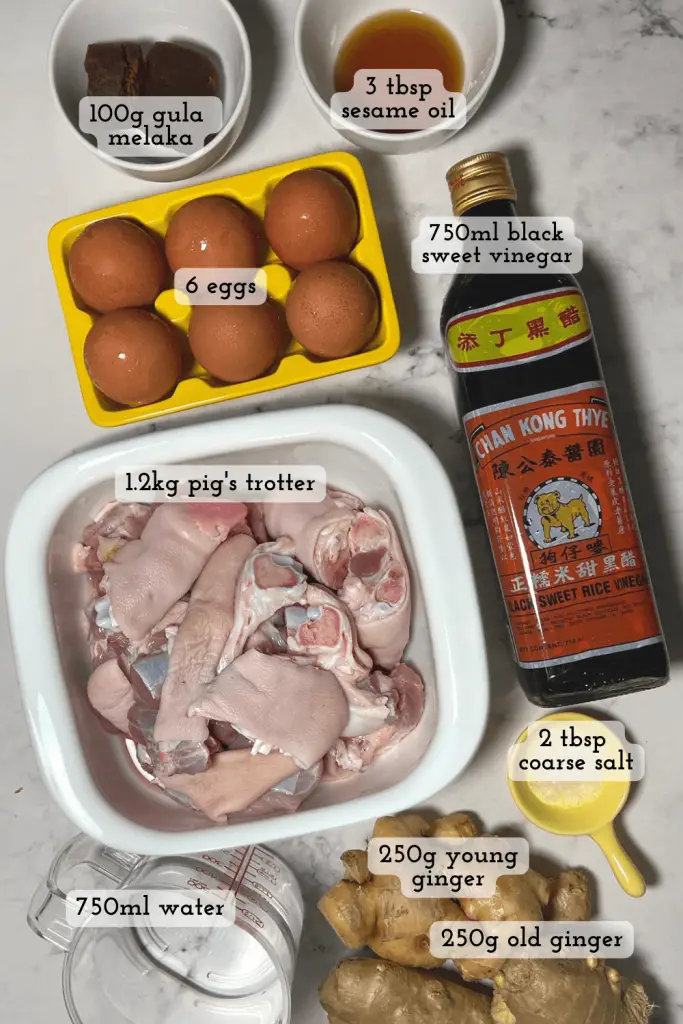
Watch how to cook Pig’s Trotter Vinegar 猪脚醋 on YouTube
Pin to save and cook later
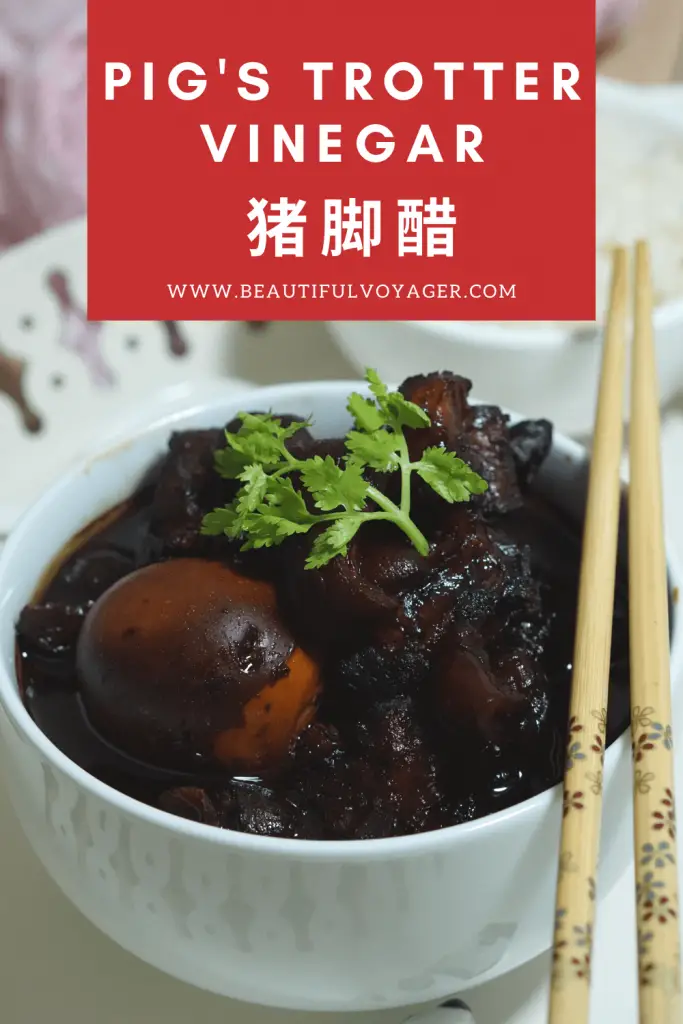
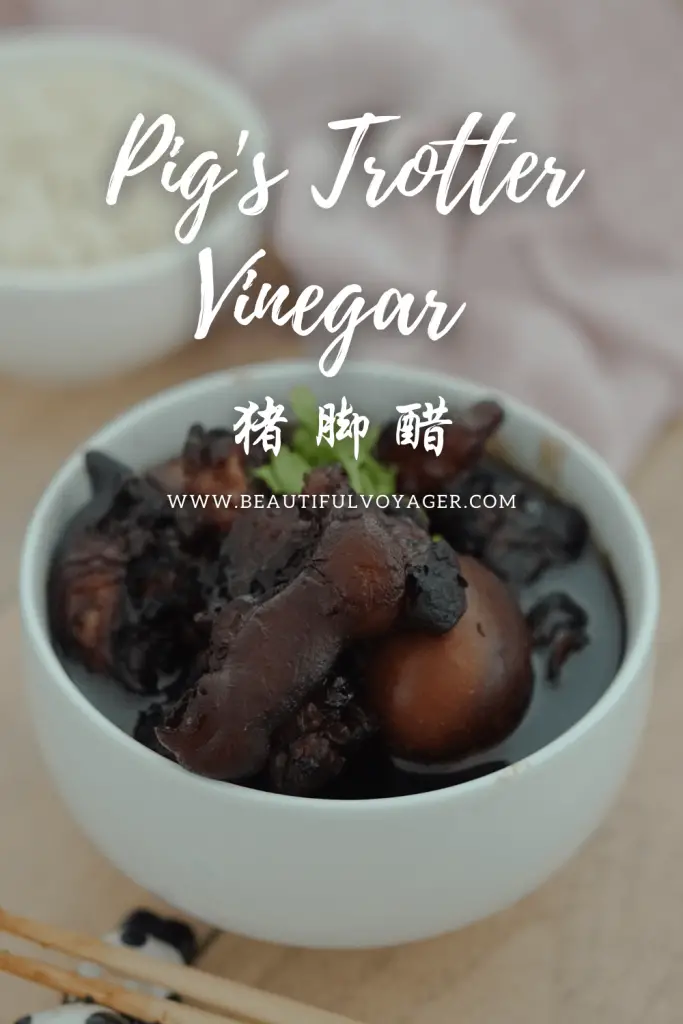
Pig’s Trotter Vinegar 猪脚醋
Ingredients
- 1.2 kg pig's trotter (front Leg) aka Pig's Hand (猪手), chopped
- 2 tbsp coarse salt for cleaning the pig's trotters
- 2 litres water for boiling the pig's trotters
- 750 ml black sweet rice vinegar 1 bottle
- 750 ml water I used the vinegar bottle to measure
- 250 g old ginger
- 250 g young ginger
- 3 tbsp sesame oil
- 100 g gula melaka (coconut palm sugar) or just brown sugar
- 6 hard boiled eggs deshelled
- Salt season to taste, optional
Instructions
Cook the vinegar and ginger (optional to do this a day before adding the meat)
- Remove the stems (if any) from the young and old ginger. Peel the skin of the ginger off with a metal spoon. Cut the ginger into smaller chunks of about 1 inch each. Lightly bruise the ginger with the back of a knife (optional).250 g old ginger, 250 g young ginger
- Stir fry ginger over medium low heat in a pot (use only ceramic, glass, claypot, or stainless steel) without any oil, to dry up the moisture from the ginger as much as possible. Take care not to burn the ginger.
- Once the ginger appears dry enough, add 3 tbsp of sesame oil. Stir fry the ginger with the oil until the ginger releases its aroma with the sesame oil. Take care not to burn the ginger.250 g old ginger, 250 g young ginger, 3 tbsp sesame oil
- Using the same pot, add 750ml (the full bottle) of black sweet rice vinegar and 1 bottle of water (using the same bottle to measure the water). Add 100g of gula melaka (or brown sugar).750 ml black sweet rice vinegar, 750 ml water, 100 g gula melaka
- Cover with lid and bring to a boil over medium heat, then simmer over reduced heat for 30 minutes.
- If cooking the pig's trotter on the following day, remove from heat and let it cool completely. Store the cooked vinegar and ginger in a glass or ceramic container. This way, the ginger is left to absorb the flavour of the vinegar over a period of time. I left it on the countertop till the following day and it still tastes and smells great. Or store in the fridge for a longer period of time.
Cook the pig's trotter
- Rub the pig’s trotter all over with 2 tbsp of coarse salt. Remove any hair on skin, if any. Then rinse the trotters under running tap water to remove any scum. Drain the trotters well.1.2 kg pig's trotter (front Leg), 2 tbsp coarse salt
- Add pig's trotter to a pot of 2-litre water, then turn the heat on to medium and bring to boil. The water will turn cloudy. Once boiled, let it simmer for another 15 minutes.2 litres water
- Remove pig's trotters from the boiling water. Rinse under running tap water, and clean away any scum as much as possible. Remove hair from the skin, if any.
- Bring the vinegar and ginger to boil on medium low heat, then add the pig’s trotters.
- Bring the pig's trotter and vinegar to a boil. Once boiled, reduce the heat and let it simmer for about 1.5 hour until the pig’s trotter turn soft. Cover with lid. Stir every 30 minutes to ensure even cooking.
- Meanwhile, boil 6 eggs over medium heat in a pot of water fully covering the eggs. Once boiled, let it simmer for about 6 minutes. Then remove the eggs and let it cool completely in an ice water bath. Remove the shell of the eggs and add into the pig's trotter stew in the last 15 minutes of cooking.6 hard boiled eggs
- Add salt to the pig's trotter stew for seasoning, season to taste. Adding salt is optional.Salt
- Test the doneness of the pig's trotter by poking through the skin with a chopstick. The skin will be very tender and easy to poke through but not like jelly.
- Turn off the heat and let the pig’s trotter stew sit in the pot for at least 4 hours (or even 2-3 days) before consumption. This is to allow the pig’s trotter and ginger to fully absorb the flavour of the vinegar. Best served with a bowl of rice.

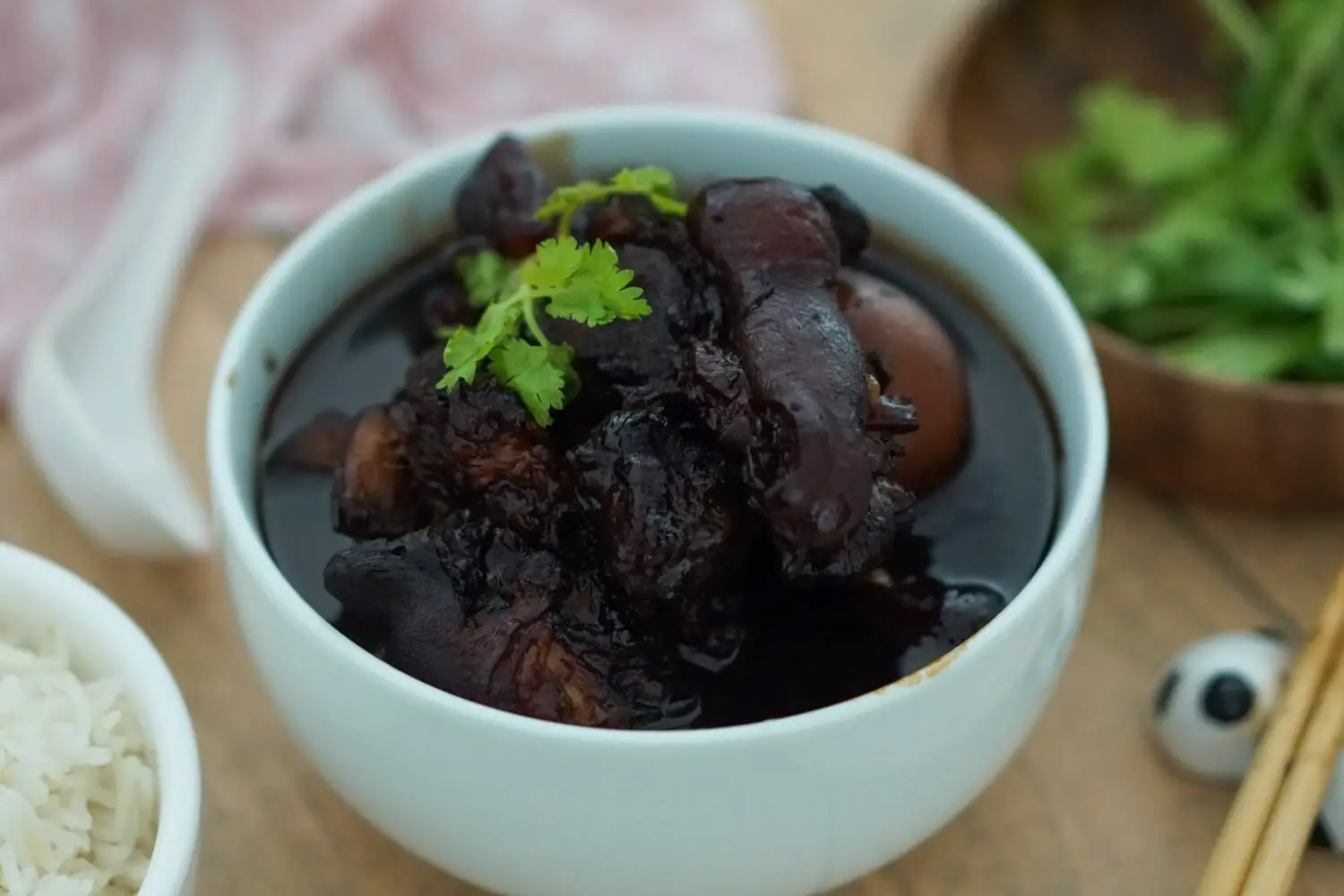
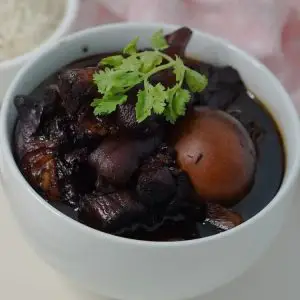
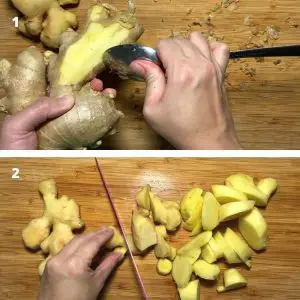
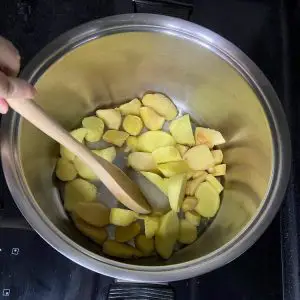
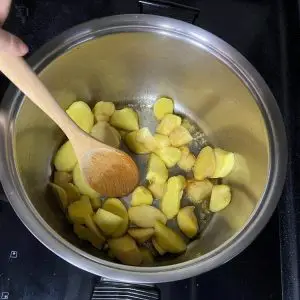
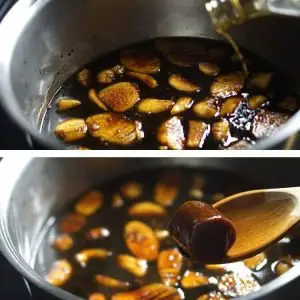
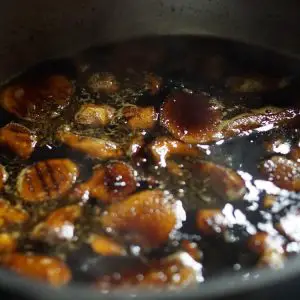
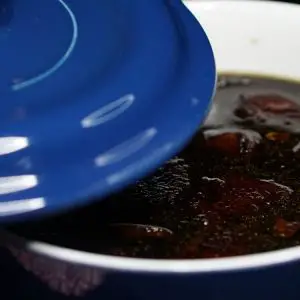
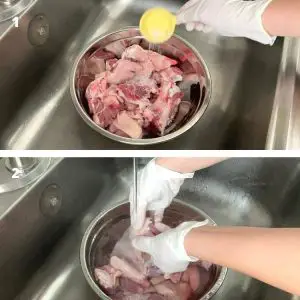
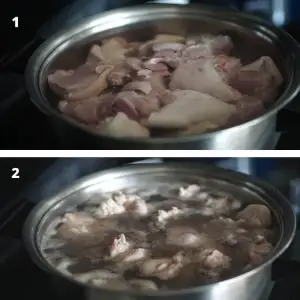
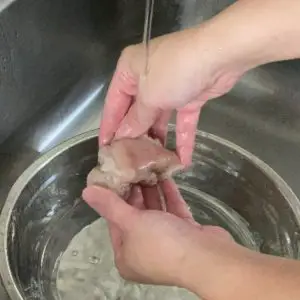
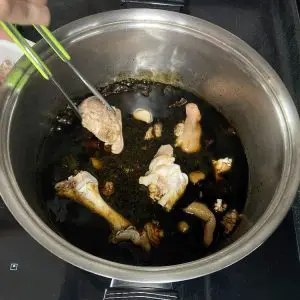
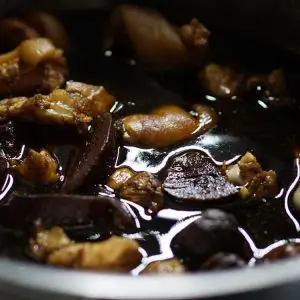
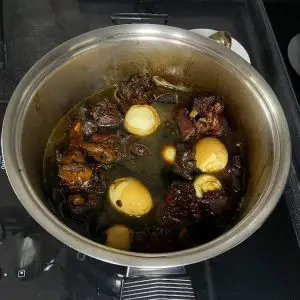
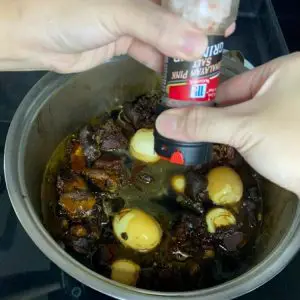
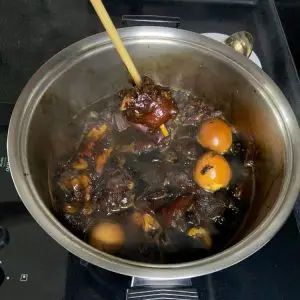
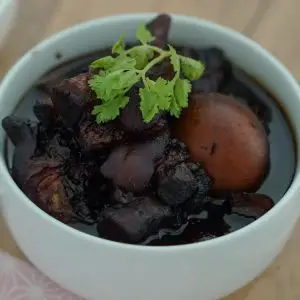
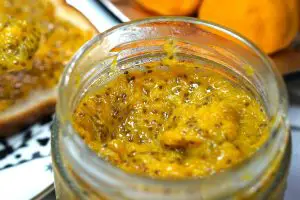 Orange Marmalade with Chia Seed (No Sugar Added)
Orange Marmalade with Chia Seed (No Sugar Added)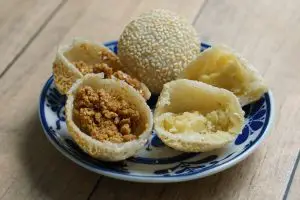 Sugar-Free Sesame Ball - Air Fryer Chinese Jian Dui 气炸锅煎堆
Sugar-Free Sesame Ball - Air Fryer Chinese Jian Dui 气炸锅煎堆



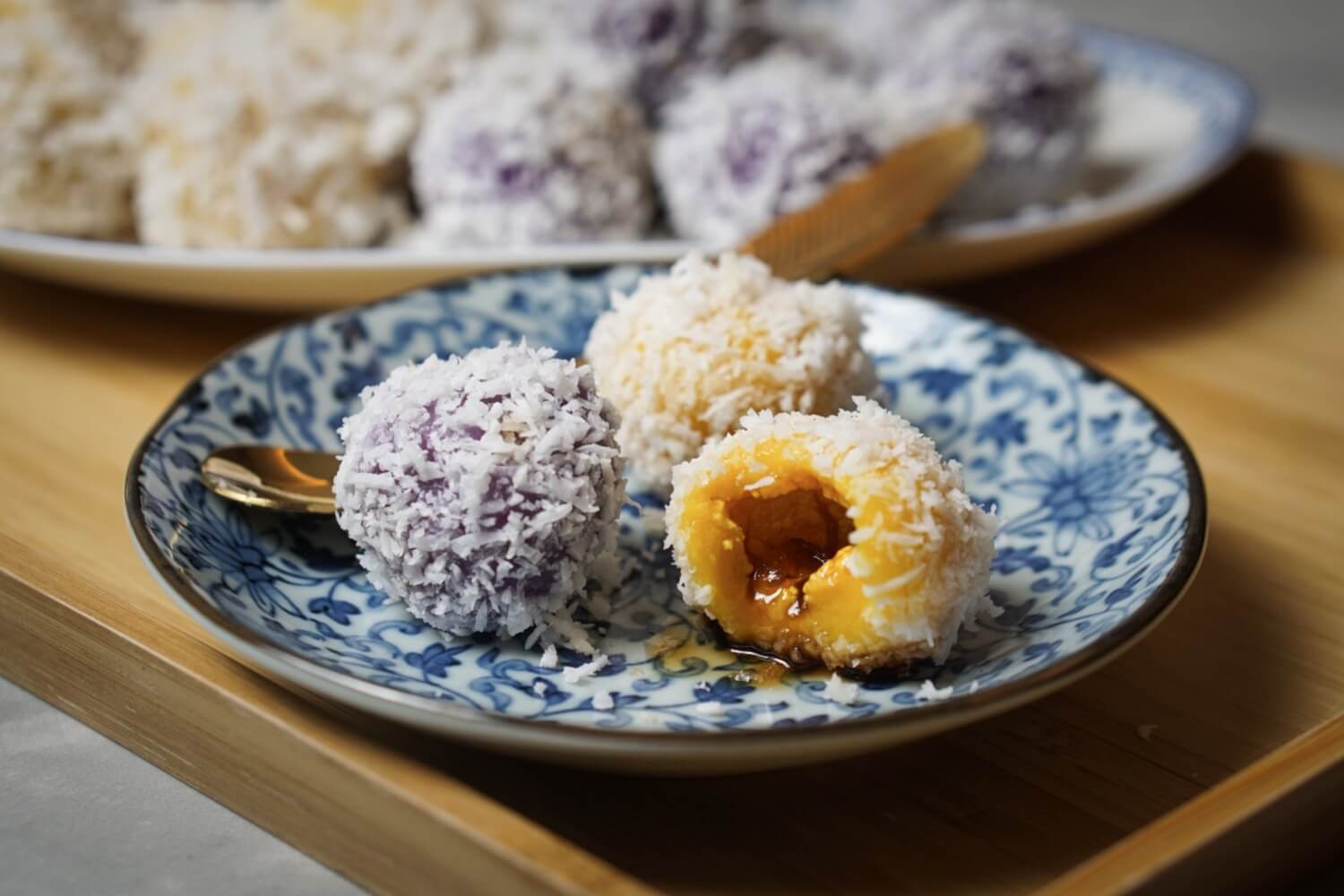
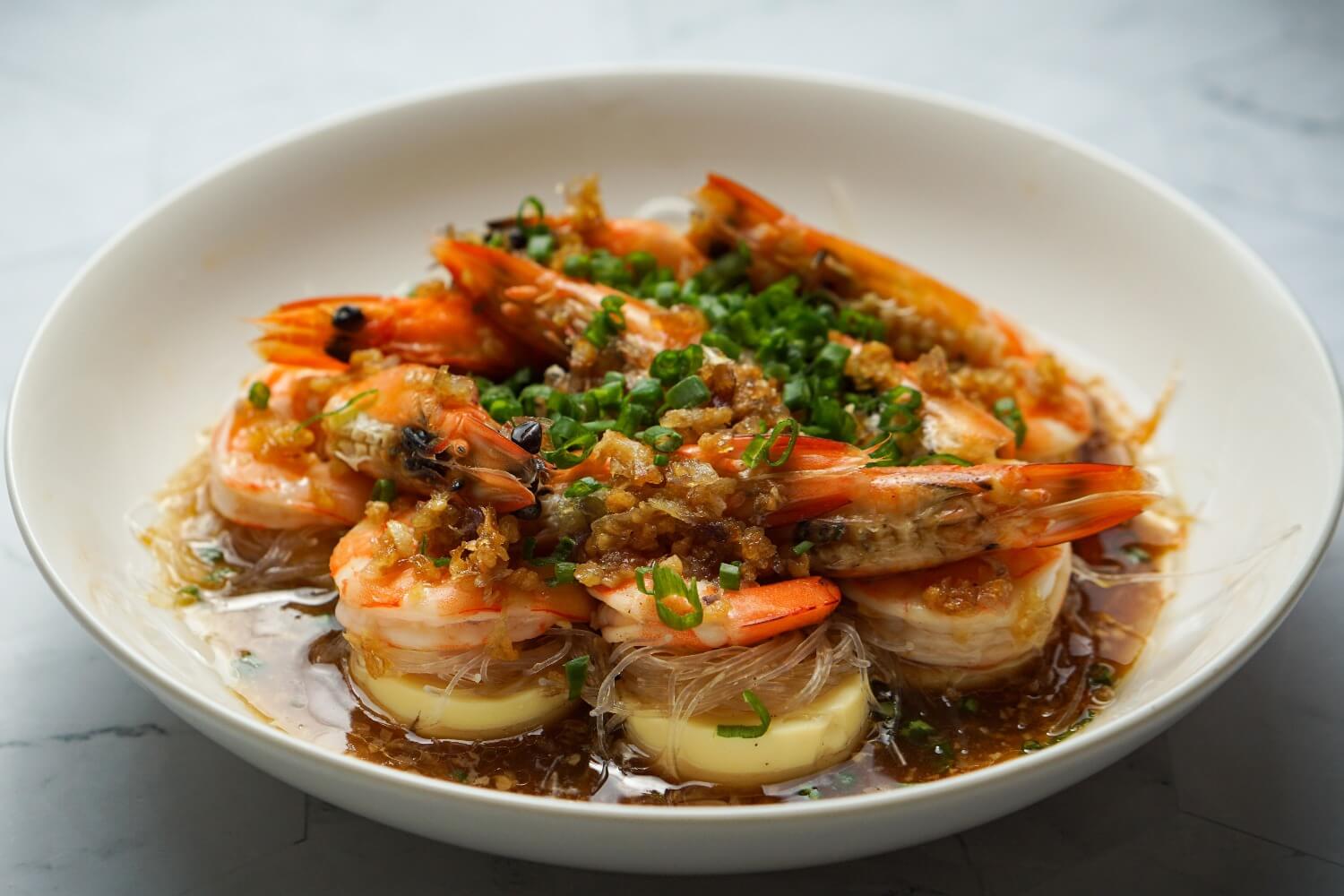
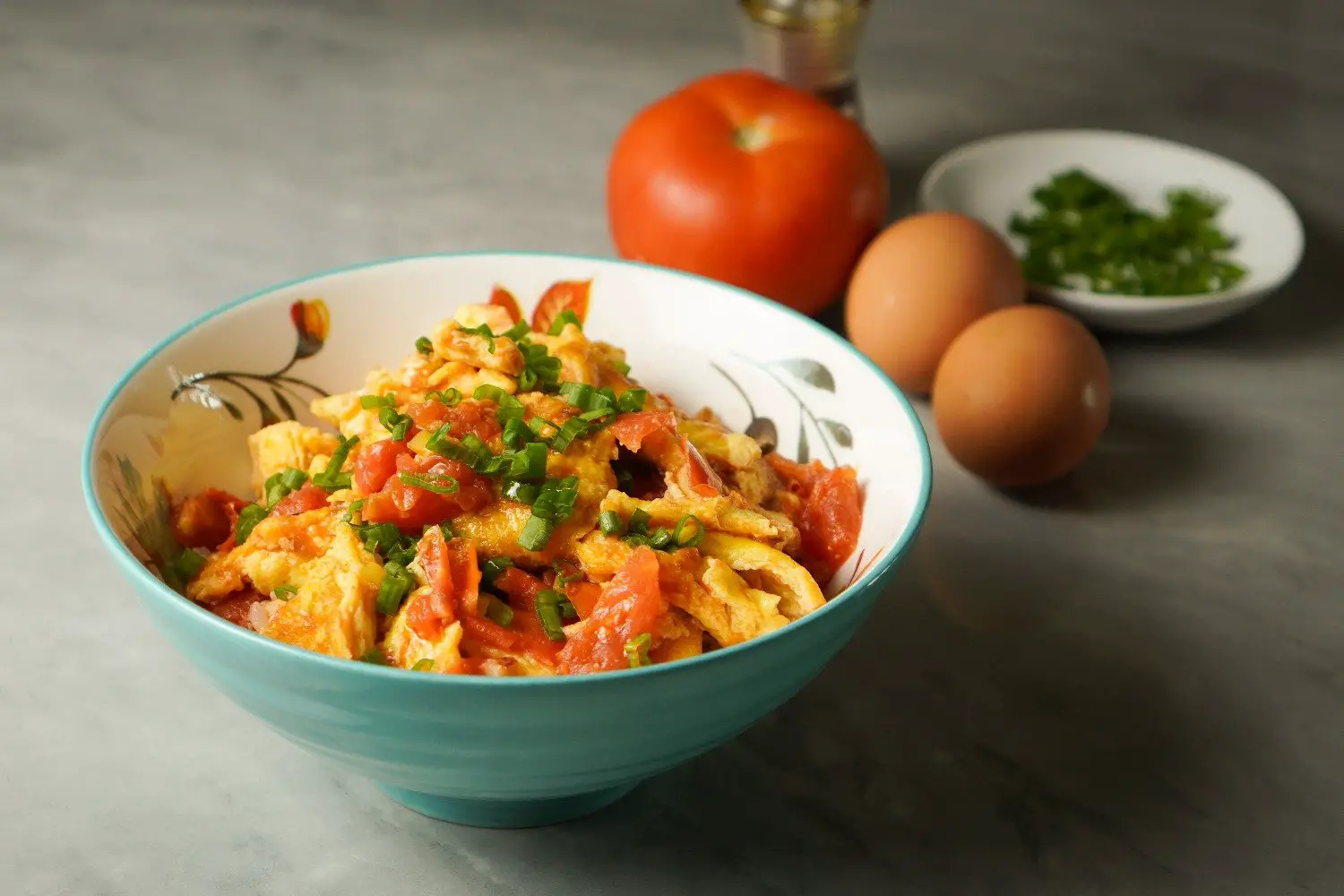



5 April 2022 at 5:20 pmExcellent . Thank you for sharing.
I use bentong ginger for a more “gingerly spicy kick”
6 April 2022 at 2:37 amThanks for visiting. Oh yes this Bentong ginger is the king of ginger, we couldn’t get hold of it to make this recipe but that’s an excellent choice of ginger!
23 April 2022 at 11:27 pmCan this be reboiled over the week to infuse the flavours? I heard pig trotter ginger needs to be boiled everyday for a week and add more vinegar each time to increase depth of flavour
24 April 2022 at 4:51 amIf you are cooking the sauce in a big portion then yes it should be reboiled so what you said is correct. For the portion in this recipe, it only lasted me for 2 rounds of cooking.
18 May 2022 at 12:29 pmI can eat 2 big bowls of rice just with this dish 😛 Thanks for sharing!
18 May 2022 at 3:24 pmHaha, me too 😀
20 July 2022 at 10:53 pmthank you for Mummy’s receipe, it is super good.
20 July 2022 at 10:58 pmwow! supper good like Mum’s receipe. is it recommended to put some garlic?
21 July 2022 at 10:32 amThanks for visiting. No need to put garlic actually, it already tastes very good. 😀